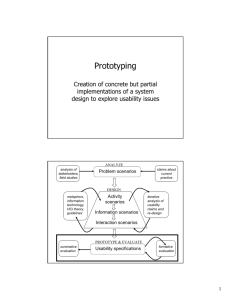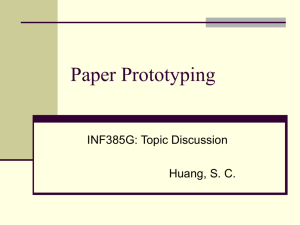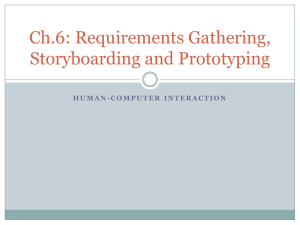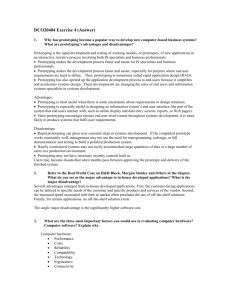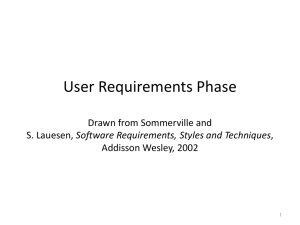CPIT 280 - Syllabus
advertisement
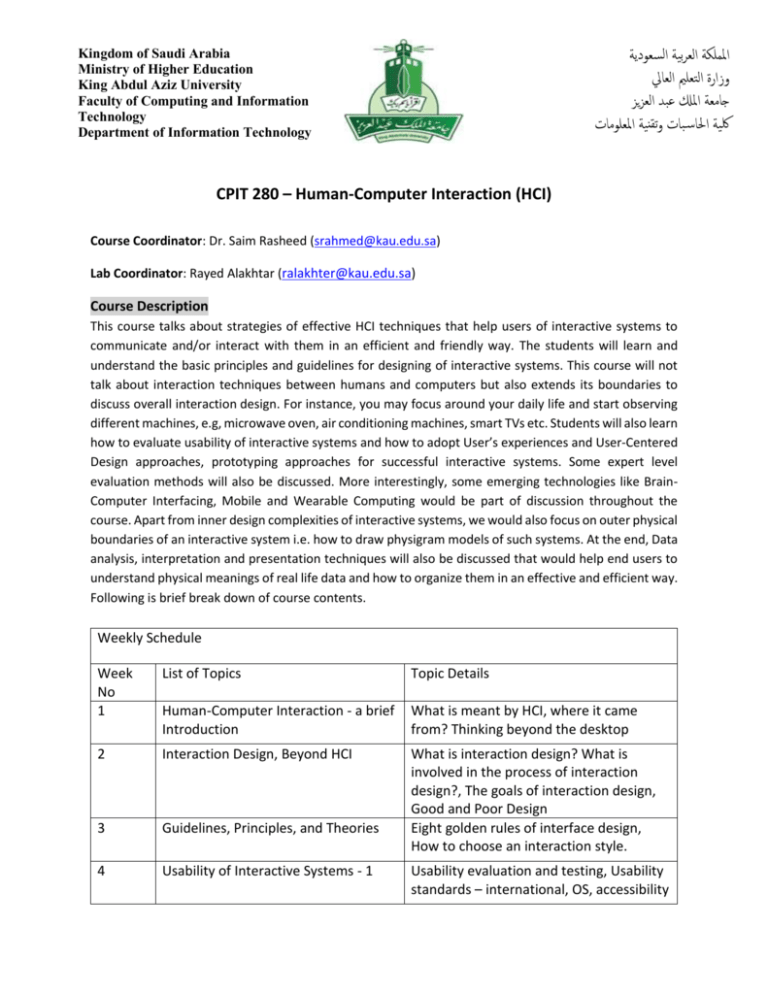
اململكة العربية السعودية وزارة التعلمي العايل جامعة املكل عبد العزيز لكية احلاس بات وتقنية املعلومات Kingdom of Saudi Arabia Ministry of Higher Education King Abdul Aziz University Faculty of Computing and Information Technology Department of Information Technology CPIT 280 – Human-Computer Interaction (HCI) Course Coordinator: Dr. Saim Rasheed (srahmed@kau.edu.sa) Lab Coordinator: Rayed Alakhtar (ralakhter@kau.edu.sa) Course Description This course talks about strategies of effective HCI techniques that help users of interactive systems to communicate and/or interact with them in an efficient and friendly way. The students will learn and understand the basic principles and guidelines for designing of interactive systems. This course will not talk about interaction techniques between humans and computers but also extends its boundaries to discuss overall interaction design. For instance, you may focus around your daily life and start observing different machines, e.g, microwave oven, air conditioning machines, smart TVs etc. Students will also learn how to evaluate usability of interactive systems and how to adopt User’s experiences and User-Centered Design approaches, prototyping approaches for successful interactive systems. Some expert level evaluation methods will also be discussed. More interestingly, some emerging technologies like BrainComputer Interfacing, Mobile and Wearable Computing would be part of discussion throughout the course. Apart from inner design complexities of interactive systems, we would also focus on outer physical boundaries of an interactive system i.e. how to draw physigram models of such systems. At the end, Data analysis, interpretation and presentation techniques will also be discussed that would help end users to understand physical meanings of real life data and how to organize them in an effective and efficient way. Following is brief break down of course contents. Weekly Schedule Week No 1 List of Topics Topic Details Human-Computer Interaction - a brief Introduction What is meant by HCI, where it came from? Thinking beyond the desktop 2 Interaction Design, Beyond HCI 3 Guidelines, Principles, and Theories What is interaction design? What is involved in the process of interaction design?, The goals of interaction design, Good and Poor Design Eight golden rules of interface design, How to choose an interaction style. 4 Usability of Interactive Systems - 1 Usability evaluation and testing, Usability standards – international, OS, accessibility 5 Usability of Interactive Systems - 2 Usability evaluation and testing, Usability standards – international, OS, accessibility 6 Developing Effective Interfaces - 1 Understanding the user experiences, User centered Designs and interaction styles 7 Developing Effective Interfaces - 2 Matching interface elements to user requirements, GUIs and Non-GUIs 8 Evaluating Interface Designs 9 Prototyping - 1 10 Prototyping - 2 Expert review methods, like, Heuristics, Guidelines review, Consistency inspection, Cognitive walkthrough, Metaphors of human thinking and Formal usability inspection Low fidelity and High fidelity Prototyping, Paper Prototyping, Wireframe Prototyping Low fidelity and High fidelity Prototyping, Paper Prototyping, Wireframe Prototyping 11 Emerging Technologies - 1 12 Emerging Technologies - 2 13 Physigram: Modelling Devices for Natural Interaction 14 Data analysis, interpretation and presentation - 1 15 Data analysis, interpretation and presentation - 2 Virtual reality systems, Brain-Computer Interfaces and Display Technologies (heads-up, goggles, etc. Mobile computing, Wearable computing and Pervasive Computing Physical Devices, their states and Feedback, Exposed States and Physical Logical Mapping Qualitative and Quantitative data and analysis, data gathered from questionnaires, interviews and observations and commonly available software packages for data analysis Qualitative and Quantitative data and analysis, data gathered from questionnaires, interviews and observations and commonly available software packages for data analysis Recommended Books • Designing the User Interface: Strategies for Effective Human-Computer Interaction, 5th edition, by Ben Shneiderman and Catherine Plaisant. • Interaction Design: beyond human-computer interaction, 3rd edition, by Helen Sharp, Yvonne Rogers, Jenny Preece. • Human Computer Interaction, 3rd edition, by Alan Dix, Janet Finlay, Gregory D. Abowd, Russell Beale. For further online reading, https://www.interaction-design.org/ Course Relationship to key student outcomes (ABET) A B C D E F G H I × x x J K L Assessment Tools and Distribution of Grades Assessment Tools First Examination Second Examination Final Examination Lab Assignments/Projects Total Distribution of grades 15% 15% 30% 20% 20% 100% M N

